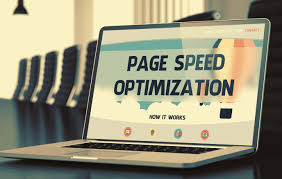Email campaigns effectively nurture audience relationships, turning casual visitors into loyal customers. They provide a direct line of communication to build trust, deliver value, and foster loyalty when used strategically.
In this blog, we explore email campaigns, their effectiveness, and how to craft campaigns that drive loyalty and retention.
What Are Email Campaigns?
Email campaigns are structured series of emails sent to a targeted audience to achieve specific goals, such as increasing sales, building trust, or encouraging repeat engagement. To ensure success, achieving the best email deliverability is crucial, as it ensures your emails reach the intended inboxes and avoid spam filters. Unlike one-off emails, campaigns are automated, strategically planned, and personalized to create a cohesive experience.
Key benefits of email campaigns include:
- Direct communication: Reaching your audience in their inbox ensures your message isn’t lost in the noise of social media.
- Personalization: Emails can be tailored to individual preferences, behaviors, and needs.
- High ROI: Email marketing consistently delivers one of the highest returns on investment compared to other marketing channels.
When planning your strategy, remember to regularly check email deliverability to ensure your carefully crafted emails aren’t wasted on undelivered messages.
Now that you understand what email campaigns are, let’s explore the essential elements that make them successful and ensure they resonate with your audience.
The Key Elements of a Successful Email Campaign Strategy
- Clear Goals: How to define what each campaign aims to achieve (e.g., engagement, conversions, retention).
- Content Relevance: Tips on crafting messages that align with customer interests and pain points.
- Timing and Frequency: Balancing when and how often to send emails to avoid fatigue.
- Optimization Tips: A/B testing subject lines, designs, and CTAs to refine performance.
Let’s dive into how you can use them effectively.
Step 1: Start with an Impactful Welcome Email
The welcome email is your first opportunity to make an impression, and it sets the tone for the relationship with your subscriber. It’s also a good time to test the performance of your email delivery by using email deliverability tools to analyze open rates and ensure your emails are reaching inboxes.
Why It’s Important:
- First impressions matter: A compelling welcome email increases the likelihood of continued interaction.
- Higher engagement: Welcome emails typically have higher open rates than other emails.
What Makes a Great Welcome Email?
- Warm introduction: Briefly share who you are and what your brand stands for.
- Value upfront: Offer something useful, like a discount code, helpful resources, or a link to popular products.
- Clear next steps: Guide the subscriber to explore your website, sign up for a program, or follow you on social media.
Step 2: Focus on Delivering Consistent Value
Delivering consistent value is key to retaining customers. Your subscribers will only stay engaged if your emails consistently meet their needs or interests.
How to Deliver Value:
- Educational content: Provide how-to guides, tutorials, or expert tips.
- Exclusive offers: Share discounts, free shipping, or subscriber-only deals.
- Behind-the-scenes insights: Give your audience a peek into your brand’s operations or new product launches.
Why It Works:
- Value-driven emails build trust and credibility.
- They position your brand as a resource, not just a seller.
Step 3: Segment Your Audience for Personalization
Personalization makes your emails more relevant, and segmentation is the key to achieving it. By dividing your audience into smaller groups, you can tailor messages to their specific needs or behaviors.
Ways to Segment Your Audience:
- By purchase history: Recommend products based on past purchases.
- By location: Share location-specific offers or events.
- By engagement: Re-engage inactive subscribers or reward loyal customers.
Why It’s Effective:
- Personalized content achieves higher open and click-through rates.
- This strengthens audience connection by demonstrating an understanding of their preferences.
Step 4: Build Automated Email Journeys
Automation allows you to create seamless customer experiences by delivering the right message at the right time. These automated workflows save time and ensure consistent engagement.
Examples of Automated Emails:
- Abandoned cart emails: Remind customers of items they left in their cart.
- Post-purchase emails: Thank customers for their order, suggest related products, or invite them to leave a review.
- Re-engagement campaigns: Reach out to dormant subscribers with an exclusive offer or update.
Benefits of Automation:
- Saves time by eliminating manual work.
- Increases relevance by aligning email timing with customer actions.
Step 5: Encourage Engagement and Interaction
Engagement isn’t a one-way street. By encouraging subscribers to interact with your emails, you create a sense of connection and make them feel valued.
How to Foster Interaction:
- Feedback surveys: Ask for opinions about your products or services.
- Polls or quizzes: Add fun, interactive elements to your emails.
- Direct replies: Invite subscribers to reply to your emails with questions or comments.
Why Engagement Matters:
- It builds trust and loyalty.
- Interactive content can provide valuable insights into customer preferences.
Step 6: Reward Customer Loyalty
Loyalty programs and rewards help strengthen relationships with your audience. When customers feel appreciated, they’re more likely to stick with your brand.
Ideas for Loyalty Rewards:
- Exclusive discounts: Offer deals that are only available to subscribers.
- Early access: Let loyal customers preview new products or sales before the general public.
- Personalized milestones: Celebrate birthdays, anniversaries, or purchase milestones with tailored offers.
The Impact:
- Rewards show appreciation and encourage repeat purchases.
- Loyal customers are more likely to advocate for your brand.
Step 7: Track Performance and Refine Your Strategy
Analyzing your email campaign’s performance ensures that you’re continually improving and adapting to your audience’s needs.
Metrics to Monitor:
- Open rates: Gauge the effectiveness of your subject lines.
- Click-through rates (CTR): Measure how engaging your content is.
- Conversion rates: Track how often recipients take the desired action.
How to Use This Data:
- Experiment with subject lines, CTAs, and content formats.
- Identify trends to refine your segmentation or messaging strategy.
- Adjust your approach to improve performance over time.
Common Mistakes to Avoid
While email campaigns are powerful, they can backfire if executed poorly. Avoid these pitfalls:
- Sending too many emails: Overloading inboxes can lead to unsubscribes.
- Generic messaging: Failing to personalize content reduces its relevance.
- Weak CTAs: Emails lacking clear next steps lose impact.
- Ignoring feedback: Not adapting to customer preferences can alienate your audience.
Building Loyalty, One Email at a Time
Email campaigns are more than just a marketing tool—they’re a way to create genuine relationships with your customers. By focusing on personalization, consistency, and delivering real value, you can transform one-time visitors into loyal supporters of your brand.
Every email you send is a chance to strengthen that relationship. With the right strategy, you can turn casual visitors into lifelong customers who not only keep coming back but also become advocates for your business.
FAQs:
What is the Best Email Marketing Campaign?
The best email marketing campaign is one that meets its specific goals, whether that’s driving sales, increasing engagement, or building customer loyalty. Successful campaigns share common traits:
- Personalization: Tailoring content to the recipient’s interests or behavior.
- Clear goals: Each email has a clear purpose, such as promoting a product, sharing useful information, or encouraging feedback.
- Strong CTAs: Calls-to-action that guide readers toward the next step, like making a purchase or signing up for an event.
- Consistency: Regular emails that maintain quality without overwhelming the audience.
- Value-driven content: Emails that solve problems, entertain, or offer something exclusive.
Examples include welcome emails, cart abandonment reminders, and post-purchase follow-ups. The “best” campaign depends on your audience, goals, and industry.
How Many Types of Email Campaigns Are There?
There are several types of email campaigns, each serving a specific purpose. The most common include:
- Welcome Emails: Sent to new subscribers to introduce your brand and set expectations.
- Promotional Emails: Share discounts, sales, or product launches to encourage purchases.
- Newsletter Emails: Provide regular updates, news, or valuable content to maintain engagement.
- Abandoned Cart Emails: Remind customers of items left in their cart to drive conversions.
- Re-engagement Emails: Target inactive subscribers to reignite interest.
- Transactional Emails: Confirm orders, shipping updates, or account changes—essential for trust.
- Feedback or Survey Emails: Ask for customer opinions to improve your products or services.
- Event Invitations: Promote webinars, sales events, or product launches.
The type of campaign you choose depends on your specific objectives and audience.
What is the Difference Between Email Marketing and Email Campaigns?
The difference lies in scope and execution:
- Email Marketing: This is the overall strategy of using email as a marketing tool to achieve business goals, such as growing your audience, building customer relationships, or increasing sales. It’s the broad umbrella that includes planning, audience segmentation, content creation, and performance analysis.
- Email Campaigns: These are specific, goal-driven executions within an email marketing strategy. A campaign is a series of related emails sent to achieve a particular purpose, like promoting a sale or nurturing leads.
In summary, email marketing is the overarching strategy, while campaigns are its actionable components.
Keep an eye for more latest news & updates on Gossips!




